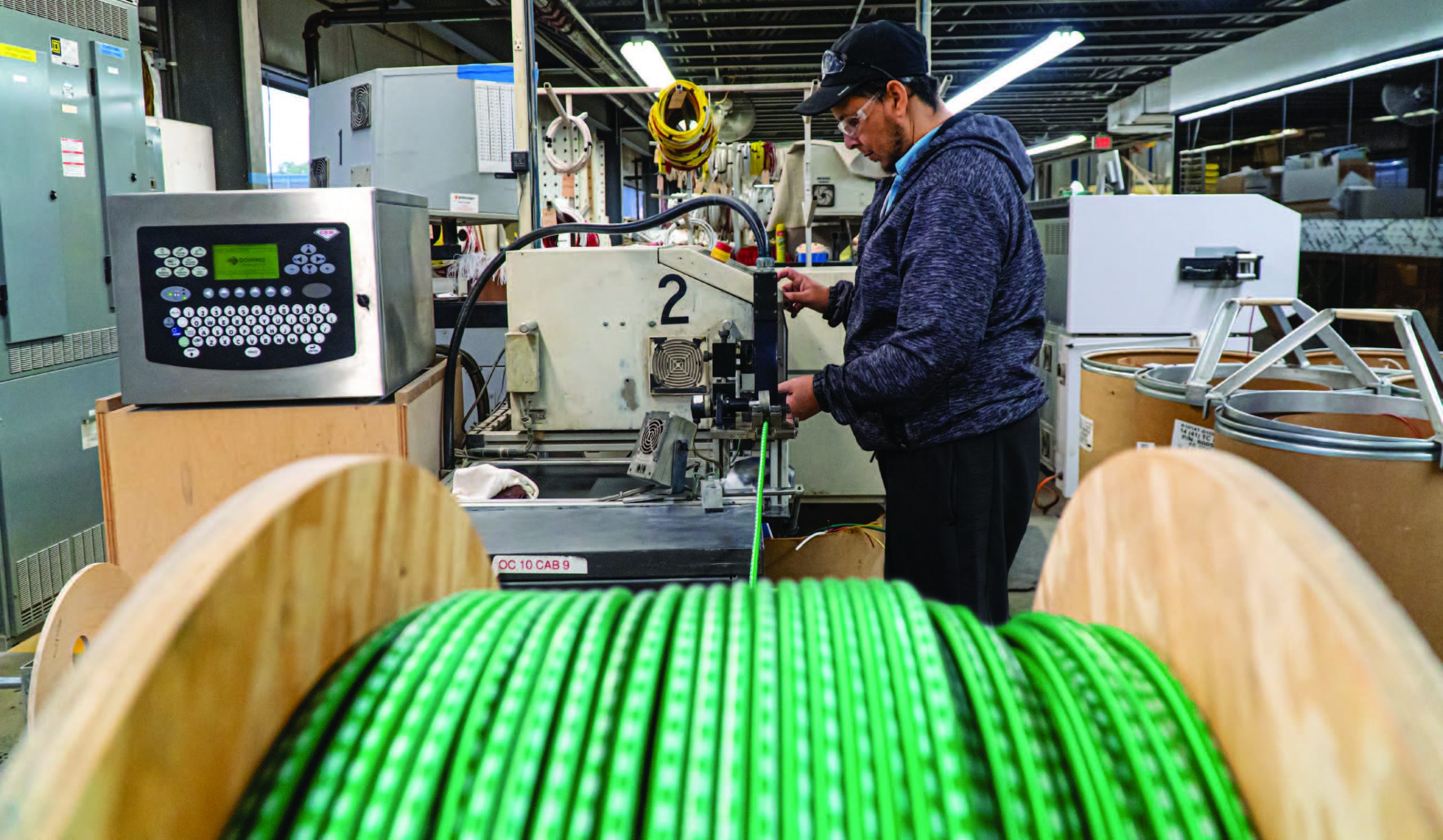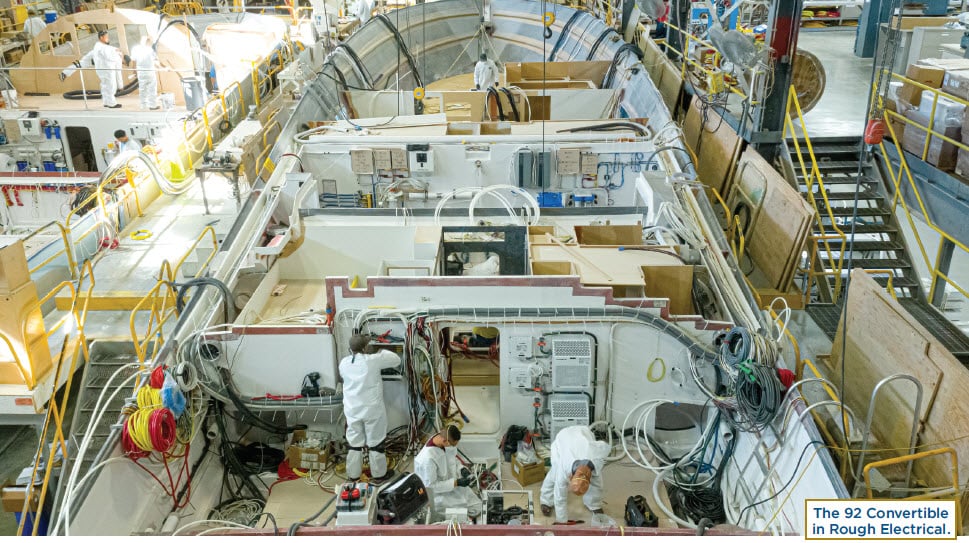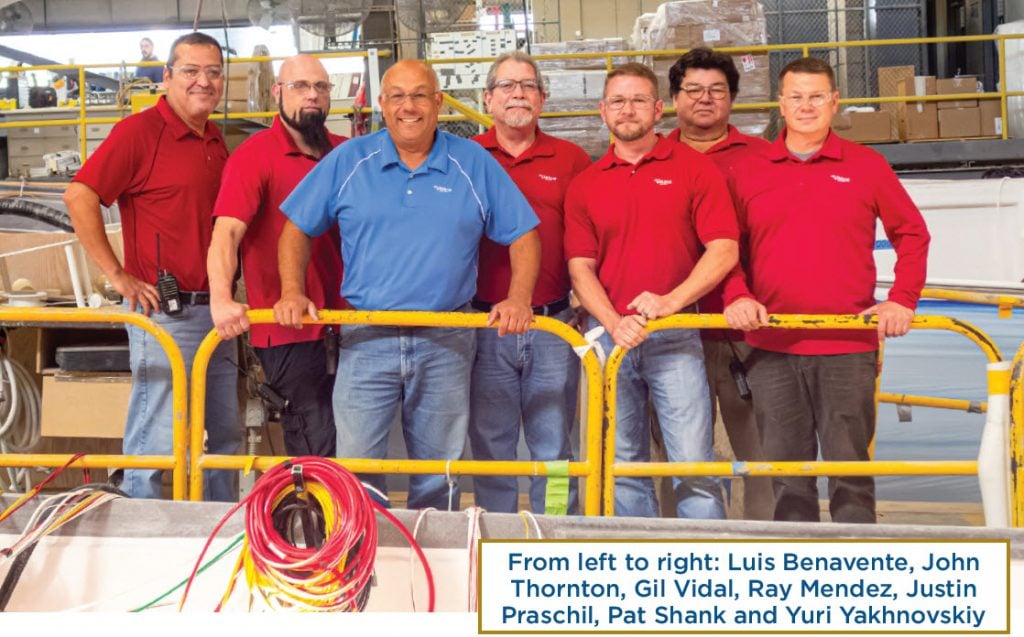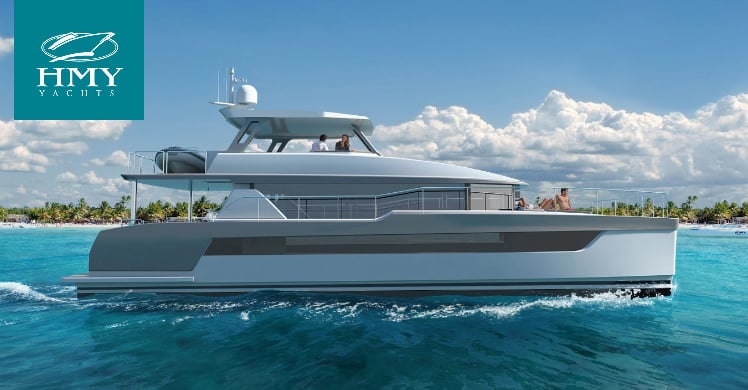
Profile: Viking Yachts Electrical Department
As seen in Valhalla Magazine:
Walk the production lines of our boatbuilding plants in New Gretna or Mullica and you can’t help but notice the sheer variety of wires and electrical components that are being installed in our yachts. The Electrical Department is responsible for all of it. They’re charged with installing hundreds of ship’s systems, conveniences, appliances, lighting fixtures, switches, buttons, gadgets … The list goes on and on. Everything from the obvious (battery cables) to the inconspicuous (indirect rope lighting underneath the beds). Sure, they install the simpler devices, such as light switches and AC outlets, but they’re also responsible for sophisticated mechanisms and systems like automatic salon doors, VIPER steering and OctoPlex control and monitoring systems. How do they get it all done? We found out by sitting down for an in-depth interview with the Electrical Department’s Gil Vidal, who has been the Supervisor of this Department for 15 years.
Q: What would you like people to know about the Electrical Department?
A: We’re responsible for a lot of what you don’t see on a Viking. Behind the bulkheads, inside the helm consoles and underneath the headliners there’s a whole world of electrical wires, connections and terminals. We make sure all of it is installed, assembled and finished to perfection so that when you hit that button or flip that switch it works every time.
Q: Can you give us an overall picture of the Electrical Department?
A: Sure. Electrical actually consists of three departments: Bench Electrical (Department 29), Rough Electrical (Department 27) and Finish Electrical (Department 28). We have about 47 team members here in New Gretna and another 22 in Mullica.
Q: What takes place in Department 29, Bench Electrical?
A: Bench Electrical consists of 3,600 square feet, located on the mezzanine area above Line 1. We have seven team members, and several of them have been at Viking for decades. Most of the electrical in the boat starts here; they are responsible for preparing the wire harnesses, which are the command and control portions of the electrical system. The helm and any other sub-assembly components that can be built on the bench are also done by Department 29.
Q: Describe some of the equipment and machinery that is used in Electrical Bench.
A: We have excellent wire-processing equipment. Our Schleuniger machines cut wires to exact predetermined lengths to accommodate connections later on the line. The machines also print on each wire, in 18-inch intervals, its origin and destination. This documentation pays off down the road when specific wires need to be identified for additional electrical or electronics components. We’ve also had boats damaged in storms come back to us for repairs, and our labeling system has paid off in dividends in these instances.
Q: What steps are taken to complete each wiring harness?
A: Every boat has a wire file generated by the Design and Engineering Department. If we know we're building a 72 Convertible, for example, we go into its wire file and pick out the options according to the work order. Then we start running the raw material through the wire machines. We put the coiled, measured and labeled wire in its various lengths and sizes onto a large rack. These wires are then brought to what we call the pegboards, where the team starts to assemble the harnesses. The boards are representations of the wire routes throughout the boat. Typically, the peg points indicate a location where there’s a turn in the wiring route, or what we call a drop in the boat, where the wire “drops out” of the harness to a device or a component. Once the harnesses are completed they are placed on pallets and are transferred to Rough Electrical.
Q: The bench does much more than create wiring harnesses, correct?
A: Absolutely. All of your distribution panels and boxes, both AC and DC, are assembled on the bench as well as what we call the DIN rail assemblies, which are junction points for multiple wires.
Q: From what you are saying, preparing the wiring harnesses and assembling as much as possible outside the boat is very important.
A: It’s critical. With the vast number of individuals working in or around a boat at any given time, it is important to have the ability to wire certain individual units outside the hull and then have the units dropped into place when complete. We currently pre-wire many of the crew quarters, all of the enclosed bridge helms and every galley across the production line prior to the unit’s placement within the hull. This process helps keep us organized, frees up crowded work areas and helps reduce the time needed to complete the boats.

Q: When does Rough Electrical take over?
A: When a boat comes out of Viglass it enters the Rough Mechanical and the
Rough Electrical stages; this is when we’ll start putting the harnessing into the boat. The first task in Rough Electrical is to prepare the boat to accept the wiring and components. The crews install wire attachment and protection points throughout the boat. Tie wrap attachment points, which are glued or mechanically fastened into place, hold the wires along their routes. There are various access points that are provided for us by Viglass. But prior to running wire through any of those access points, we use molded plastic insulators, called cuffs, that protect the wire as it passes through the bulkheads. We also use a lot of what we call split-loom chafe guard for protection.
Q: Does Rough Electrical actually run the wires throughout the boat?
A: That’s right—they’re making sure the wires get to their final destinations, or their terminal points. To do this, they have to work with the Carpentry Department. As the carpenters are installing components in the boat, we're still wiring them and getting wires through them. For instance, when the deckhouse goes on, we have all the overhead wiring that needs to be done. So, we work in conjunction with the mechanics and the carpenters to get our wiring placed whenever the opportunity presents itself. Once the boat leaves the carpentry stage, it is in the Finish Electrical and Finish Mechanical Departments.
Q: How many boats are typically in Rough Electrical and Finish Electrical?
A: I could have up to six boats in Rough and in Finish at one time. We get custom add-ons in Finish as well, so we might end up working on a boat farther down the line when it goes to the Make Ready Dock.
Q: Describe what is done in Finish.
A: The name says it all. They’re responsible for finishing the electrical installation of the interior components – switches, receptacles, lighting, cover plates, wall sconces. And of course, we wire and complete the main electrical panel on each boat.
Q: What are some of the more interesting gadgets or components you’ve installed?
A: Most recently, we’ve installed lighted galley countertops on a 92 Convertible and on a 93 Motor Yacht’s aft deck we were responsible for custom overhead linear lighting that can be shown in multiple colors and programmed to music. Heated towel bars in the heads—that was a big thing. We also work with Chris Channell from Channell Glass to light his artwork on the boat. We had a customer who wanted Channell Glass medallions throughout the companionway as nightlights, so we provided wiring and power for that. Pretty cool.
Q: How has the scope of the job changed over your tenure?
A: It has changed a lot. When I started here, for instance, steering systems were all hydraulic. I didn't touch anything having to do with steering. Now every steering system we deal with is fly-by-wire. We’re involved with VIPER steering and the SeaStar systems. And with Valhalla Boatworks, we’re involved in the Yamaha and the Mercury steering systems.
Q: I heard you’re into TVs, as well.
A: We do the bulk of the entertainment systems. AME (Atlantic Marine Electronics) has started to take some of that off our plate, but we still do a lot of TVs, Fusion stereos and DVD players. And we’re the guys responsible for installing the mechanisms that raise and lower the salon and enclosed bridge HD TVs.
Q: Because the wires are out of sight, your department kind of flies under the radar.
A: That’s true. You can’t see our work but you know we’re there.


